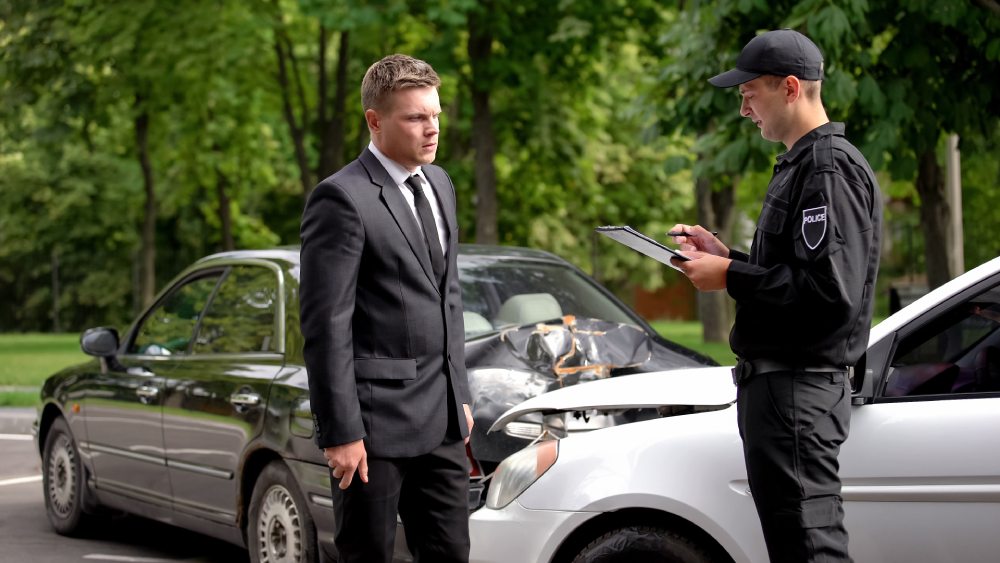A crash report is a vital piece of evidence after any car accident. But how do crash reports in Utah work, and why are they so important? Below, we explain everything you should know about Utah accident reports, and how to find your own crash report.
What Is an Accident Report in Utah?
Your accident report is a legal record. It documents the circumstances around a car accident and attempts to identify who caused the crash.
Every accident report contains certain basic information, such as:
- Driver(s) name and address
- Driver(s) insurance details
- Injuries or fatalities
- Officer’s narration of events
Your Utah accident report may also have other details, such as citations issued at the scene.
Usually, crash reports are completed when a driver calls law enforcement and an officer attends the scene. Any attending law enforcement officer in Utah can complete a crash report. This means that your local police department or the Utah Highway Patrol may complete the report for you.
Are Crash Reports in Utah Public Record?
In Utah, members of the public can access police crash reports. However, you can’t access just any crash report in Utah. You need to have a legal interest in seeing the report. Interested parties under Utah law include the driver(s), passenger(s), vehicle owner(s), and insurance companies.
Witnesses have no legal right to see the crash report, including Utah Highway Patrol accident reports.
Are Utah Accident Reports Legally Required?
Sometimes, you need a crash report because you must report the crash. In Utah, the rules are as follows.
You must report a crash to law enforcement in Utah if:
- Anyone is injured (even if it’s a minor injury); or
- There is property damage which appears to be worth $2,500 or more.
The officer should send the report to the Department of Public Safety (DPS) within 10 days. You may be required to provide further information. The DPS will explain if this is the case and they’ll provide you with the correct paperwork.
When should you notify your insurance company? As soon as possible. This usually means within a few days of the crash unless, for example, you’re severely injured and incapacitated.
Should you report minor incidents, such as fender benders? It’s always best to err on the side of caution. Otherwise, you risk being charged with a hit-and-run offense, even if the damage seems minor.

What Are the Benefits of Getting My Utah Crash Report?
Aside from the legal requirements, there are a few reasons why you should get a crash report.
- Your claim may be invalid if the report is inaccurate. Getting a copy of your report means you can correct errors before filing an insurance claim.
- A crash report can help to prove who caused the crash. This may help you secure personal injury compensation if you make a civil claim.
- The crash report may help you prove your insurance claim, especially if the other driver was at fault.
It’s also useful, for your own records, to have a copy of your Utah accident report.
How to Read a Utah Highway Patrol Crash Report
Once you have your crash report, you might be wondering – how do you read it? Luckily, most Utah crash reports follow the same basic pattern, so here’s what to look for in your report.
- Incident number: Every accident has an incident number. Keep a note of this number as it makes it easier to locate your report in the future.
- Driver(s) details: This section sets out the driver’s personal information, such as their name, address, and insurance details.
- Vehicle information: This part details the vehicles involved, such as license plate information, vehicle make, and vehicle model.
- Accident details: This section includes, for example, the date, location, and time of the crash.
- Officer’s narrative: The officer explains, as fully as possible, their observations as to what happened. This statement is even more compelling if the officer witnessed the crash.
- Contributing factors: Contributing factors include road hazards, weather, and driver negligence.
- Injuries: Injuries or fatalities identified at the scene are noted in the report. This evidence can be used alongside medical records to determine the full extent of any injuries.
- Property damage: Any damage identified at the scene, such as car damage, is documented in the report.
- Citations: If an officer issued a citation at the scene, such as a DUI, this is documented.
- Diagram: Accident reports often include diagrams depicting what happened. This may be helpful for insurance and civil lawsuit purposes.
Obtaining a Utah Accident Report
There are two main ways to get a copy of your Utah Highway Patrol crash report. You can:
- Order a copy electronically by contacting the right department; or
- Complete our online form and let us find your report for you.
Although you can contact Utah Highway Patrol, it’s difficult to locate the right department. Our team, however, knows exactly where to look. We can quickly find your report and explain how you might access it. In the meantime, you can focus on recovering from your crash.
Find Your Utah Highway Patrol Accident Report Today
Do you need a Utah crash report? Auto Accident Report can help. Our online form is available 24/7 – simply provide a few details about your crash and we’ll locate your report. Once we find your report, we’ll explain how you can get a copy quickly and easily.
Were you injured in the crash? If you don’t have a personal injury lawyer, don’t worry. We can match you with trusted personal injury attorneys in our network! This is a no-obligation service, so if you don’t wish to connect with a lawyer, you don’t need to.
The best part? It’s free to use our service. So don’t delay. Start your claims process and move forward with your life. Contact Auto Accident Report now!
